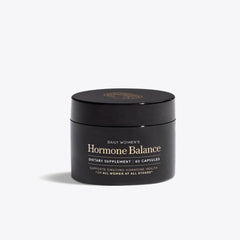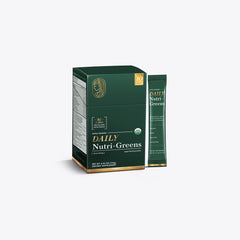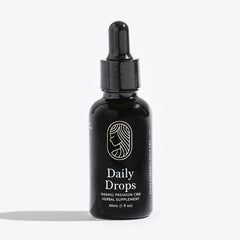Have you ever wondered why some days a half gummy feels like just the right amount—and other days, it feels like you didn’t take anything at all?
You’re not imagining it.
It’s not your tolerance.
It’s your hormones.
As women, our internal chemistry shifts week by week, guided by the natural rhythms of estrogen and progesterone. These shifts don’t just affect our mood, energy, and sleep—they directly influence how our bodies absorb, metabolize, and respond to cannabinoids like THC. [1]
Understanding this connection empowers you to better support your body, rather than fight against it. In this guide, we'll walk you through the science behind why your THC experience fluctuates across your cycle, how to adjust your dose thoughtfully, and why flexible, low-dose formats (like our Tipsy collection) were designed with your body's wisdom in mind.
How Hormones Shape Your THC Experience
Your endocannabinoid system (ECS) is a major player in mood regulation, stress response, and inflammation control. Estrogen and progesterone—the primary hormones cycling through your body each month—interact directly with your ECS. [2]
Estrogen has been shown to enhance cannabinoid receptor sensitivity and slow THC metabolism, meaning THC can feel stronger during times of high estrogen. [3]
Progesterone, on the other hand, may dull the body’s response to THC, requiring higher or adjusted doses for the same effects. [4]
This hormonal ebb and flow means your experience with THC isn’t static—it’s dynamic. Learning to adjust your cannabis intake based on where you are in your cycle isn’t indulgent. It’s intelligent.
A Phase-by-Phase Guide to Dosing With Your Cycle
Menstrual Phase (Days 1–5)
Estrogen and progesterone are at their lowest.
This phase can bring heightened sensitivity—not just emotionally, but physically. Your body may process THC more intensely, making smaller doses feel stronger than expected.
Dosing Tip: Start low and go slow. Even half your usual dose may be enough to soften discomfort or ease tension.
Follicular Phase (Days 6–13)
Estrogen is rising.
Energy lifts, creativity returns, and your body may respond to THC with feelings of lightness and ease. This is often a “sweet spot” phase for many women using low-dose THC.
Dosing Tip: Maintain a consistent microdose here to amplify natural momentum—small amounts can enhance clarity and joy without overwhelming your system.
Ovulation (Around Day 14)
Estrogen peaks.
With cannabinoid receptor sensitivity at its highest [5], even a tiny amount of THC may feel amplified. Effects could be more euphoric, sensory, or emotional during this phase.
Dosing Tip: Consider dialing your dose down slightly here. Half your usual amount might feel stronger than expected.
Luteal Phase (Days 15–28)
Progesterone rises, estrogen falls.
Mood swings, tension, and cravings are common as PMS sets in. THC effects can feel muted—some women find it harder to achieve the same level of calm or relief.
Dosing Tip: You may benefit from slightly higher doses or combining THC with CBD to gently lift mood and ease irritability without overdoing it.
And What If Your Cycle Isn't "Regular"?
Hormonal rhythms aren’t always clockwork, especially during perimenopause, postpartum, or times of stress.
Even with an irregular cycle, your body is still responding to shifting levels of estrogen and progesterone—and still interacting with THC in unique ways. [6]
That’s why low-dose formats matter.
They allow you to listen, adapt, and meet your body’s needs in real time—without overwhelming your system.
At Equilibria, we design products like our Tipsy Gummies and Drink Drops to give you the flexibility to adjust effortlessly, empowering you to stay connected to your body’s evolving needs.
Meet Your Body Where It Is
Your cycle is not an obstacle to navigate around. It’s a conversation your body is always having with you.
By syncing your THC use with your natural rhythms, you’re choosing a wellness approach that’s flexible, sustainable, and rooted in respect for your biology.

Sources
-
Cooper, Z.D., et al. (2017). Sex/gender differences in cannabis and cannabinoid pharmacology: A reflection of differences in the endocannabinoid system? Drug Testing and Analysis
-
Craft, R.M., et al. (2013). Sex differences in cannabinoid pharmacology. British Journal of Pharmacology
-
Klumpers, L.E., et al. (2012). Sex differences in THC metabolism after acute cannabis smoking. PubMed
-
Fattore, L., Fratta, W. (2010). How important are sex differences in cannabinoid action? British Journal of Pharmacology
-
Atkinson, H.C., et al. (2014). The role of the endocannabinoid system in female reproductive tissues. Journal of Clinical Endocrinology & Metabolism
-
Mayo Clinic Staff. (2021). Perimenopause: Symptoms and Causes. Mayo Clinic







